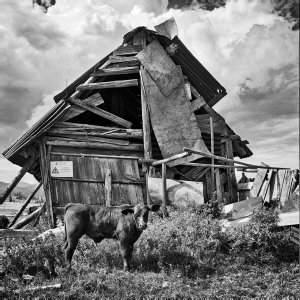Brian Moore
Moderator
Thank you, Gianluca.Thank you, Brian. Nice to see you back in the forum.
Thank you, Gianluca.Thank you, Brian. Nice to see you back in the forum.
Thank you, Rob. Very appreciative of what you have said.It IS good to see Brian back after a short absence (congratulations, grandad!). I can’t imagine this place without Brian. Although you’ve developed into an excellent digital photographer, Brian, especially in architecture and landscape genres, it is your film work which brings out a more playful quality, leading to me to think you enjoy film work more. Is there something in that?
The great thing about the LX100 is that it is small and very convenient. That said, I abandoned mine for a gx85 due to the limitations of the fixed lens - it just wasn't long enough (although it does very well as a macro lens).I think I should abandon this point-and-shoot and go back to something more serious.
Just remember who you are shooting for and why you enjoy going out to shoot.
Gianluca,You are right, basically I tend to be documentary in photography and even when I try to look at the subject with a more creative (I don't want to say artistic) eye, I can't abandon the prosaic nature of the everyday. But of course your shooting tips could come in very handy if by chance I manage to make the leap to the other side one day.
Interesting how you place a lot of importance on good colour calibration before conversion to B&W, which is what I normally do too, only with mediocre results, unfortunately.
As for the editing process, of course I'm interested, but I imagine it will be very much influenced by the software tool used, which in my case is Darktable.
I'm not asking because I have a shred of modesty left, but what I'd really like to see is how you would edit this photo.
Thank you, I really appreciate the effort you put into your reply.

I agree with Rob’s comments in his first post (I also agree with most of what he added later, but that is not important now!) and the tonality and use of colour suit these images well I think. And not only are they a super record of the place as you found it, they are great images in their own right. The B&W conversion is effective as well, but it is very much a photograph than a record whereas the others are clearly more records that happen to be super images too.
I like the b&w most. The clouds, the dilapidated hut and a cow, seeming to be interested in the photographers activity.
fantastic set of dereliction. the images with a cow standing in front of the building remnants are my favorites.
I think this works extremely well in black and white. The contrasting light and dark areas provide a greater degree of visual interest, in my opinion. It encourages me to spend more time admiring the photograph.More than one of you liked the last photo (thanks for the feedback), and Rob suggested black and white. I had already tried B&W, but it was rather bland, now I'm going to try again. The problem is that the more I immerse myself in the pleasure of editing, the more I drift away from reality and in the end I am no longer able to judge the result. I get lost in digital translation, I hardly accept the fact that translating is a bit of betraying. I don't know, You be the Judge of the 'Golden Calf'.
I think this works extremely well in black and white. The contrasting light and dark areas provide a greater degree of visual interest, in my opinion. It encourages me to spend more time admiring the photograph.
